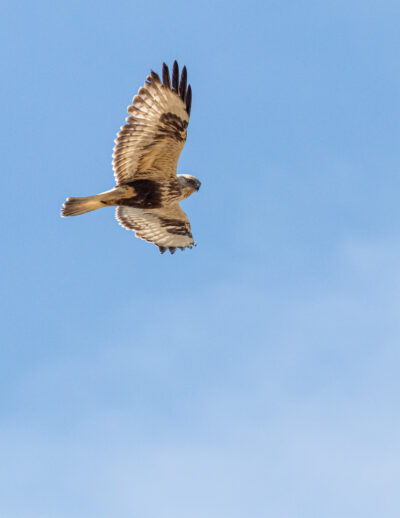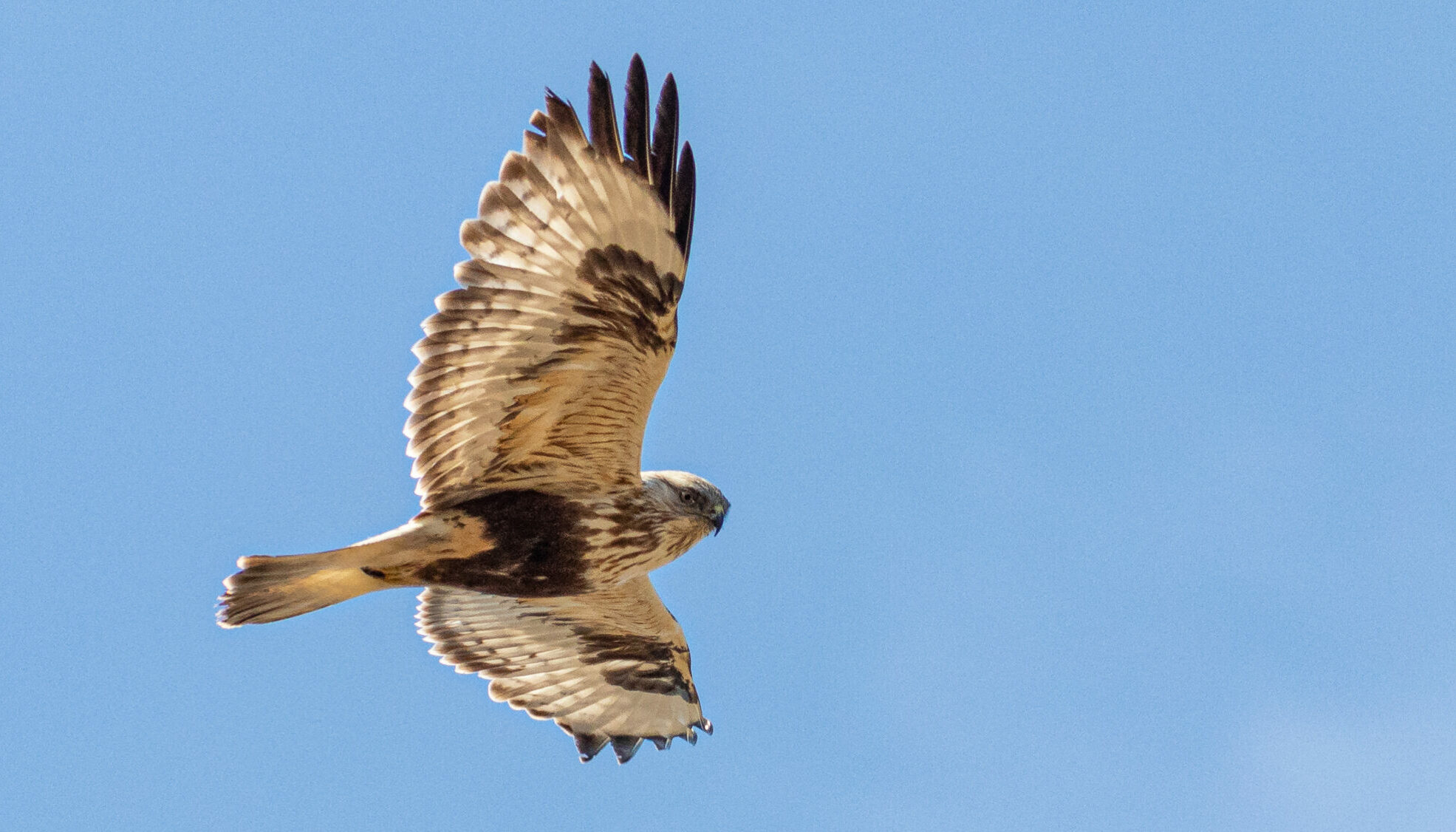Last December, after enjoying a wonderful Christmas Bird Count with friends in Keene, New Hampshire, I found myself thinking about wintering raptors. I had spent the fall visiting hawk count sites on the East Coast, Cadillac Mountain in Maine, Mt. Watatic in Massachusetts, and Lighthouse Point in Connecticut. Being on the Atlantic flyway, odds were greatly against any of the birds I saw being one of the birds I counted heading north last spring here at Whitefish Point, but not completely out of the realm of possibility. Was it even possible that the winter territories of some of these birds actually intersect each other? Which way would they go in the spring? Would one perhaps follow the other on a northward path over Whitefish Point? These were all entertaining thoughts for a cold winter’s evening sitting by the woodstove after a great day of birding, and as I lay down to sleep, it wasn’t visions of sugarplum fairies dancing in my head — it was kettles of migrating raptors leading me to wonder where I would go in the spring.
Much like migratory birds, we all have certain paths we choose to follow in life. The only question I had to ask myself was, “What makes me feel like I am on the right path?” The answer was simple — return to Whitefish Point and spend another season counting hawks for Michigan Audubon (lucky for me that they were happy to have me back). I wanted to meet more raptor enthusiasts and count more raptors! I wanted that elusive 1,000-plus Sharp-shinned Hawk day, and this season we did have a day with over 2,000 Sharp-shinned Hawks! Ironically, it happened on my day off. Argh! I am getting a bit ahead of myself though; let’s take a step back.
On March 15, 2021, I found myself once again standing behind the spotting scope on the hawk deck at Whitefish Point. Over the winter, I had researched long-range weather patterns that predicted a warmer-than-average spring, and I was surrounded by supporting evidence. The snowpack was shallow and patchy, not at all typical for this part of the Upper Peninsula at this time of the year. Locals would later inform me that snowfall accumulation over the past winter was the lowest it had been in decades. My first day was pleasant, sunny, and unseasonably warm, and I counted one Bald Eagle and four Golden Eagles. My second day brought me another Bald Eagle and five more Golden Eagles. Day three, one bald and three goldens! The count was off to a great start, and I ended my first week with 38 Bald Eagles, 18 Golden Eagles, and eight Northern Goshawks. The following week, temperatures sky-rocketed into the 40s (Fahrenheit) and all signs were pointing to a super early spring. I started to dream about a mega-migration, thinking to myself, “This is why I came back to Whitefish Point; an epic season is blossoming right before my eyes!”

Rough-legged Hawk by Rich Couse
Well folks, mother nature is a fickle mistress, and she decided to give me the cold shoulder. That early spring heatwave was nothing but a tease. What followed was plummeting temperatures and north winds blowing with a renewed and unchecked ferocity. I had two days with barely a single bird in the sky as I watched the spring going into a full retreat while slowly wearing away my hopes for an epic season. However, while April brought me many long, gray, cold days, it also brought me spectacular flights of Rough-legged Hawks, Sharp-shinned Hawks, and American Kestrels. I counted as many kestrels (145) in a single day as I had counted the entire 2020 season! Two days with 100 Rough-legged Hawks nearly doubled the total number from last year, and the 2,000-plus Sharp-shinned Hawk day accounted for more than two-thirds of last season’s total. So let me be clear, while 2021 was not going to be an epic season, it still had the potential to be a great season. If only May had held true…
Right in the heart of Broad-winged Hawk migration, May made and broke a promise to me. A migration counter’s life is tied to the weather app as we continuously look ahead to see what days will have the best migration conditions, and a window had opened. After a weeklong spell of unfavorable north and east winds, a string of five days with south winds had me looking to the skies each day with eager anticipation for a big broad-winged day — one that had giant kettles trading thermals on their way over the hawk deck and would delight onlookers to no end.
Inexplicably, it just never happened. Broad-winged Hawks did arrive but their numbers just weren’t what I expected, and that would be the tale of the rest of the season. There were a couple of decent days with their numbers in the hundreds, and with that being said, the season total of 4,441 was still a better season than last year. While I cannot be sure if it was more so that last year was a very bad year or this year was a good year, I can state for a fact that with a grand total of 14,192 individual raptors, the 2021 season totals are the highest they have been since 2017.
What this indicates is hard to say; raptor migration is incredibly weather dependent, and the success of a season is primarily up to mother nature. This is why our long-range study (42 years) is essential; over time, the randomness of weather patterns start to mitigate themselves and an accurate picture of population dynamics becomes clear.
Overall, for me, the spring of 2021 was a great season. I had more days where I had raptors to count than not, and in my opinion, any day with a bird in the sky is a good day. Combined with having the opportunity to meet some wonderful hawk watchers, birders, and non-birders alike, I got to experience my hawk deck becoming a community of like-minded individuals spending time talking about wildlife, conservation, traveling to far-off places, and everything in between. I couldn’t have asked for more and couldn’t be happier about the path I chose to take this spring.
Next spring, make it a point to visit the hawk deck at Whitefish Point. Feel the wind and watch the skies, listen to the ceaseless roar of the waves lapping the shore of the great Lake Superior, and welcome the signs of spring borne on the wings of raptors.
~ by Richard Couse, WPBO spring hawk counter

Rich is a conservation biologist from Massachusetts. He is a firm believer in the fact that everything is connected through the ecological web of life, and his path reflects his fascination with all creatures great and small. His field research has taken him to Massachusetts, Michigan, Maine, and beyond.
This article appeared in the 2021 Summer Jack Pine Warbler.

